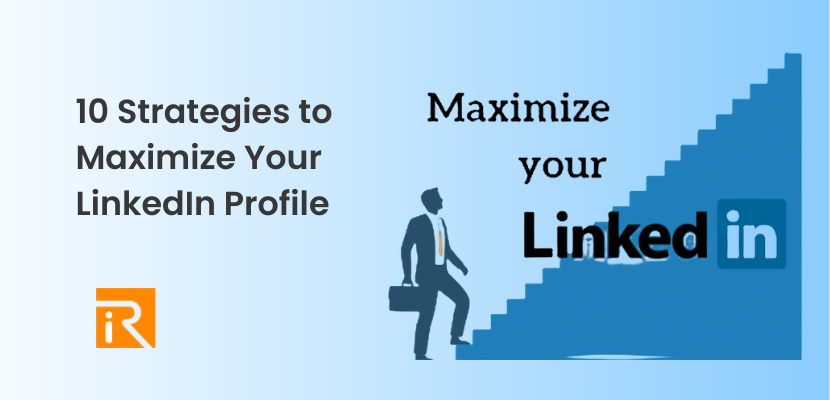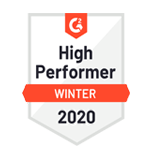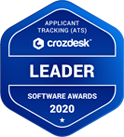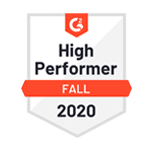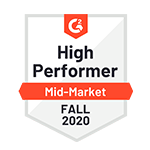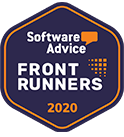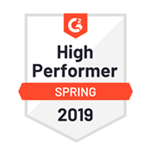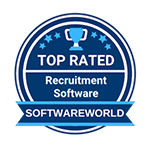Do you remember when former President Barack Obama joked during a TV press conference that he would join LinkedIn as soon as his term in office was over? While for job seekers, LinkedIn is a crucial tool for finding recruiters and companies they want to work with, it’s also the primary search engine they use. However, with more than 95% of recruiters using LinkedIn to find candidates, competition for top talent is fierce.
If you’re only updating your business LinkedIn profile occasionally, you’re not taking full advantage of all that LinkedIn has to offer. This is likely why it takes so long to find the right, skilled candidates. To optimize your recruitment campaign and establish your digital presence, it’s essential to maximize the potential of your LinkedIn company profile by utilizing these best practices.
Why LinkedIn Profile Optimization Matters for Recruiters
With more than 562 million profiles on LinkedIn, the competition for attracting potential candidates is fierce. In today’s fast-paced digital world, it’s essential to stand out from the crowd and capture the attention of your target audience.
Did you know that your LinkedIn profile can be your most powerful tool for LinkedIn personal branding and recruiting? Not only does it showcase who you are and what you do, but it’s also a reflection of your company’s brand. Effective LinkedIn profile optimization can significantly impact your LinkedIn profile visibility and your ability to attract top talent.
Understanding LinkedIn Recruiting Strategies
Before diving into profile optimization tactics, it’s important to understand that successful LinkedIn recruiting strategies go beyond just having a complete profile. Modern recruiters need to think strategically about how their LinkedIn recruiter profile represents their expertise and value proposition in the competitive talent acquisition landscape.
Crafting a Strong Value Proposition for Your LinkedIn Company Profile
One of the crucial elements of your LinkedIn company profile optimization is having a solid value proposition. Your value proposition should clearly state what problems you solve, the value you bring, and the positive impact you make on the lives of your clients and candidates.
A strong value proposition sets you apart from your competitors and helps your audience understand what unique benefits your personal brand can offer. It is the determining factor that convinces potential candidates to choose you over other companies.
Identifying Your Unique Strengths
Crafting a strong value proposition starts by identifying your unique strengths and what sets you apart from other staffing firms. You must be able to articulate clearly how you can help your clients and candidates achieve their goals.
Making Your Value Proposition Actionable
Your value proposition should be concise, easily understandable, and backed up by tangible results. Remember that your value proposition should be specific to your audience, highlighting the benefits that matter most to them. Focus on the specific problems they are facing and how your services can address those issues.
By crafting a strong value proposition, you can attract top talent and establish a strong presence on LinkedIn, ultimately setting yourself apart from the competition.
Crafting an Authentic Bio: Connecting with Your Audience Through Personal Emotion
When writing your bio, make sure it truly reflects who you are and isn’t just a generic description of your job or activities. Inject some personal emotion into your story to create an authentic narrative. An honest and genuine bio resonates with your audience and communicates the reasons behind your passion and drive.
This approach to LinkedIn personal branding helps create meaningful connections that go beyond transactional relationships, which is essential for effective LinkedIn recruiting strategies.
Enhancing Your LinkedIn Recruiter Profile: Communicating Your Expertise and Unique Value Proposition
Crafting a compelling recruiter summary is essential to stand out from the crowd and showcase your specific area of expertise to potential clients. A well-optimized LinkedIn profile for recruiters should clearly communicate value while incorporating relevant keywords naturally.
As you write your summary, consider the following points:
- Does your summary clearly communicate how you can provide solutions to the problems your clients are facing?
- Does your summary establish your credibility and showcase your abilities?
- What sets you apart from other recruiters?
Structuring Your Summary for Maximum Impact
When structuring your summary, aim for brevity and focus on one to two sentences for each point. You want to convey your story and unique value proposition, without writing a lengthy memoir.
Key Elements to Include
Highlight what you do, your significant achievements, your values and passions, and what sets you apart from other recruiters. Start by sharing what led you to become a recruiter and incorporate a personal touch to make a connection with your audience.
Then, explain what you do and highlight your accomplishments, followed by your values and passions that drive your work. Finally, emphasize the differentiators that make you stand out and how you can provide value to your clients.
Choosing the Right Profile Photo: Professionalism and Personality
Your profile photo is one of the first things people see when they visit your profile, so it’s essential to make a good first impression. A professional photo can help establish credibility, while also showing off your personality.
DIY Professional Photo Tips
If you don’t have the time or resources to get professional headshots, here are some tips to take a great photo at home. First and foremost, your photo should be well-lit and in focus. Natural lighting is always best, so try to take your photo near a window or outside during the daytime. Avoid using flash or taking photos in dimly lit rooms.
Wardrobe and Styling Considerations
When choosing what to wear, aim for something that reflects your professional persona while also showing off your personality. Consider the industry you work in and what’s appropriate attire, but don’t be afraid to add a pop of color or accessory that reflects your style.
Lastly, take several photos from different angles and with different expressions. Choose the one that looks the most professional and showcases your personality. Remember, your profile photo is an important tool to help you make connections and establish your personal brand.
Creating a Customized LinkedIn Cover Photo: Reflecting Your Personal Brand
Your cover photo is an opportunity to make a great first impression and showcase your LinkedIn personal branding. Since people often visit your profile to learn about you and your company, it’s essential to have a cover photo that stands out and represents your unique identity.
Technical Specifications and Design Tips
The recommended size for your cover photo is 1584px by 396px. If you find that your photo appears blurry, try making it the maximum size. When designing your cover photo, consider incorporating elements that reflect your brand identity. You may want to use your company’s logo, brand colors, or typography.
Creative Design Approaches
Alternatively, you can use an image or graphic that represents your industry or area of expertise. Be creative with your design, but also keep in mind that the cover photo should be professional and appropriate for your industry. Avoid using overly complicated designs or images that may distract from your profile’s content.
Finally, make sure your cover photo is relevant to your profile and represents your personal brand accurately. Your cover photo is an essential component of your LinkedIn profile optimization and can help you make a lasting impression on potential connections and clients.
Creating a Custom LinkedIn URL: Enhancing Your LinkedIn Profile Visibility
Customizing your LinkedIn URL can make it easier for others to find you on the platform and significantly improve your LinkedIn profile visibility. This simple step is often overlooked but can have a meaningful impact on your professional online presence.
Step-by-Step URL Customization
To get started, locate the light-grey box under your name that displays your current LinkedIn URL. Click the “Edit” button next to the URL and revise it to something more customized and memorable.
Best Practices for URL Selection
Ideally, your LinkedIn URL should include your name, making it easy for others to find and connect with you. For example, a good LinkedIn custom URL might be www.linkedin.com/in/yourname. Keep in mind that your customized URL is unique, so choose it wisely.
Once you have created your customized URL, be sure to use it in your email signature, business cards, and other online platforms to ensure consistency across all your online presence. Customizing your LinkedIn URL is a small but important step to help you establish your personal brand and make it easier for potential connections and clients to find you.
Optimizing Your LinkedIn Profile: Aligning Industry and Location with Your Target Audience
To increase your profile’s visibility to your target audience, it’s important to set your location and industry on LinkedIn. By doing so, your profile will show up in searches within your area and field of expertise, making it easier for potential connections and clients to find you through strategic LinkedIn profile optimization.
Geographic and Industry Targeting
Make sure to include your location and industry in your bio naturally, highlighting your focus and where you offer your services. For example, you could mention your city or state and specific industry expertise in your headline or summary section.
By aligning your industry and location with your target candidates, you can help your profile stand out and attract the right connections and clients. Don’t miss this opportunity to optimize your LinkedIn profile and increase your chances of success on the platform.
Enhancing Your LinkedIn Profile: Highlighting Your Previous Experience
Including your previous experience on your LinkedIn profile is crucial in showcasing your expertise and demonstrating to potential connections and clients that you can deliver on your promises. Your previous positions tell a story of your professional journey and demonstrate who you were and who you have become.
Creating a Cohesive Professional Narrative
When listing your previous positions, make sure there are no major gaps in your history and that your experience tells a consistent story. Keep the descriptions high-level, avoiding listing every detail of your work experience.
Optimal Content Length and Focus
Aim for around 2,000 characters or less and make sure to highlight your accomplishments in each role. Your LinkedIn profile is not a CV, so make sure to focus on the bigger picture and communicate the impact you made in your previous positions.
By doing so, you can demonstrate your value and expertise to potential connections and clients. Don’t overlook the power of showcasing your previous experience on your LinkedIn profile optimization strategy.
Adding Your Current Position for LinkedIn Recruitment Campaign Success
If you haven’t already, be sure to end your previous job and add your current firm. This is crucial for maintaining an up-to-date LinkedIn recruiter profile that accurately reflects your current role and capabilities.
Privacy Settings for Position Updates
If you don’t want to broadcast to everyone that you’ve just started a new position right now, be sure to go into your settings and change your “Account & Settings” options. Select “Privacy & Settings”. You will now see a further set of privacy options to check. The important one is to “Turn Off Your Activity Broadcasts.”
Optimizing Your Position Title and Description
Your position title should be no more than 100 characters. Once you’ve filled in your current position, update it with current responsibilities, and be sure to think about how those responsibilities help your clients and candidates.
Once you’ve finished adding in your responsibilities, add in a description about your firm and how you play a role within the firm. This contributes significantly to your overall LinkedIn company profile optimization efforts.
Enhancing Your LinkedIn Profile: Updating Your Skills & Endorsements
Your professional skills are a key component of your LinkedIn profile optimization, communicating your unique value to potential employers or clients. It’s important to regularly review and update your skills to ensure they accurately reflect your professional role, experiences, and contributions.
Strategic Skill Selection
Add skills that define your professional expertise and strengths, and make sure they are relevant to your current job roles. This will help you appear in relevant search results and attract the right connections and opportunities as part of your broader LinkedIn recruiting strategies.
Leveraging Endorsements for Credibility
In addition to updating your skills, don’t forget to seek endorsements from colleagues and connections who can vouch for your abilities. Endorsements add credibility to your LinkedIn profile for recruiters and can enhance your visibility to potential employers or clients.
By regularly updating your skills and seeking endorsements, you can ensure that your LinkedIn profile accurately reflects your professional value and helps you stand out to potential connections and opportunities.
Advanced LinkedIn Profile Optimization Techniques
Beyond the fundamental strategies outlined above, successful LinkedIn recruiting strategies often involve more advanced optimization techniques that can further enhance your LinkedIn profile visibility and effectiveness.
Keyword Research and Integration
Conduct thorough keyword research to identify the terms your target candidates and clients are likely to search for. Integrate these keywords naturally throughout your profile, including in your headline, summary, and experience descriptions.
Content Strategy for Enhanced Visibility
Regularly sharing valuable content related to your industry and recruiting expertise can significantly boost your profile’s visibility and establish you as a thought leader in your field. This approach supports both your LinkedIn personal branding efforts and your overall LinkedIn recruitment campaign success.
Measuring Your LinkedIn Profile Optimization Success
To ensure your LinkedIn profile optimization efforts are yielding results, it’s important to track key metrics and adjust your strategy accordingly. Monitor profile views, connection requests, and engagement rates to gauge the effectiveness of your optimized LinkedIn recruiter profile.
Key Performance Indicators
Track metrics such as profile views, search appearances, and the quality of connection requests you receive. These indicators will help you understand whether your LinkedIn profile for recruiters is effectively reaching and attracting your target audience.
Conclusion
In summary, effective LinkedIn profile optimization is an essential step in establishing your professional presence online and maximizing your recruitment success. By following the strategies outlined in this guide, you can create a compelling and authentic LinkedIn recruiter profile that showcases your unique value and expertise to potential employers or clients.
From optimizing your headline and summary to customizing your URL and cover photo, each element of your profile plays a critical role in building your LinkedIn personal branding and attracting the right connections and opportunities. The integration of strategic LinkedIn recruiting strategies throughout your profile will enhance your LinkedIn profile visibility and support your broader LinkedIn recruitment campaign objectives.
By regularly updating your profile and implementing comprehensive LinkedIn company profile optimization techniques, you can ensure that it accurately reflects your evolving professional identity and helps you achieve your career goals in the competitive world of talent acquisition.


